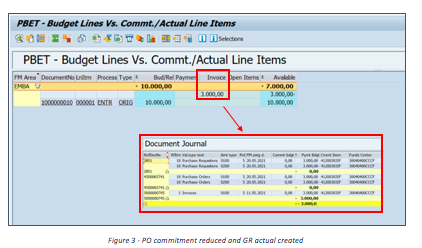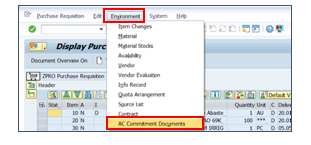Written By: SAP MM Certified Consultant Rodrigo Amorim
Some public sector companies must control the annual budget to certify that its expenses are below the budget provided for each cost center and cost element. The primary objective of the SAP Funds Management (FM) module is to address this.
When this module is activated, it interacts with several other SAP modules, especially MM, which controls all acquisitions made by the company. This interaction begins from Purchase Requisition to Invoice Verification.
Once a Purchase Requisition (PR) is created, a commitment document is also produced in the Funds Management (FM) module. This commitment document has the following information: Funds Center, Commitment Item, FM Posting Date, and Budget Value.
Funds Center: This represents a company cost center or a functional sector where the budget must be controlled;
Commitment Item: This represents the cost element of the material inserted in PR. Generally, it’s derived from the GL account, also inserted into material valuation class informed at material master data;
FM Posting Date: This is the date when the budget is committed;
Budget Value: or Committed Value. Its total comes from multiplying the quantity and valuation price inserted in PR.
If the funds center and the commitment item have enough budget to perform this commitment in PR, any error message won't show up. However, if the budget is not enough, the PR isn't created until the budget is inserted via budget transfer or a new budget entry made by the budget control sector.
After the PR has been created, the business process continues with RFQ and/or contract creation. Both documents don't have any linkage with the FM module. Due to that, FM documents aren’t created by those MM documents.
Once those steps have been done, a Purchase Order (PO) must be made to inform the vendor that material needs to be supplied. When this PO is created, two new FM documents are created, the first one reduces the commitment made for the PR, and a new one creates the commitment in PO.
It is important to mention that this reduction is necessary because the PO does not always have the exact quantities and values of the material informed in PR. Hence, the system reads the new conditions. This new budget document is created considering the new values of funds center, commitment item, FM posting date, and budget values inserted in PO.
When the goods arrive at the company, a Goods Receipt (GR) movement must be made to admit the material inside the warehouse; this movement is performed using MIGO t-code. When this movement is done, the system creates two new FM documents; the first one reduces the commitment made in PO, and the second one creates the actual in GR. This document has the same structure as the commitment document; however, this document is also integrated with General Ledger through the FI document.
Finally, when the user posts the Invoice verification, two new documents are created in the FM module. The first one reduces the actual made by the goods receipt, and a new one creates the final actual due to invoice verification.
If desired by the company, the FM process can continue throughout the Financial (FI) module. It can be done by turning on the online payment update functionality. Once it's activated, when the invoice is paid to the vendor, a final document is created in the FM module informing that this specific invoice has been paid and the whole process has been finished. This particular functionality can be turned on via OF29 t-code by ticking the flag online payment update, as shown below.
All the processes described above can be checked using MM transactions or FM transactions, such as:
MM Transactions:
Purchase Requisition: ME53N
Purchase Order: ME23N
Goods Receipt: MIGO
Invoice Verification: MIRO
FM Transactions:
Budget Information x Commitment and Actual (Total): FMB_PT01
This report makes a comparison between the budget and the commitment / actual totals. This is one of the highest-level reports in the FM module. Another main report s FMRP_RW_BUDCON. Both present the same data, but this last one uses a total table, which makes its execution faster. However, it does not make any comparison, but only shows the current status of the budget and its commitments and actuals.
Budget Information x Commitment and Actual (Line Item): FMB_PL01
In this report, the user can see a high-level view of the commitments and actuals for each funds center and commitment item. It allows the user to make a deep search through the documents by clicking twice over the commitment or actual columns if desired.
Document Journal: FMRP_RFFMEP1AX
This report presents an analytic view of all documents, either commitment or actual, posted in the FM module. The user must be careful before running it because if the filter is not well-defined, it can take be lengthy to process the requisition.














